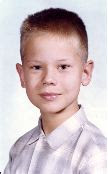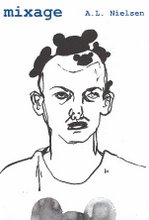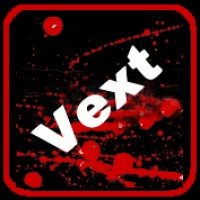
He and his band were all still wearing suits on stage in those days -- the polka dots came much later. But in addition to being a phenomenal guitarist, Buddy Guy was an amazing stage presence in that time. At a rock festival in Maryland, in his efforts to get the attention of the crowd that had come for Led Zeppelin, he had even played a solo on Sunshine of Your Love using a handkerchief to thrash the strings of his Strat. (He was using a Fender Bassman for his amp in those days, which I'd found interesting.)
I had first seen his name on this album by Junior Wells. With the exception of one novelty song, I still think this Junior's finest album. About half of it was recorded live at Pepper's Lounge, and those were the performances where Buddy's Guitar really caught fire. It was listening to this album that made me realize I'd heard that guitar before, mostly on Chess Records. He had some times appeared on other people's recordings simply as "friendly chap" to avoid contractual hassles. Fred Below was the drummer on "It's My Life, Baby!" and he was with Buddy's group the first several times I saw him play around D.C., including at the old Emergency Club, a mostly chairless, all ages, place for the hippy set near Georgetown. It was at that stage where Buddy looked down at Rose (G'town regulars from the era will remember Rose with fondness) and asked politely if she would remove her legs from the edge of the stage where she was sitting, as they were evidently distracting his band.
Buddy is 82 years old now, but to judge from this concert poster from my home town, he'll still be amazing audiences well into the future.
Starting in the 80s, when I saw Buddy he usually had Junior Wells on stage with him. They would later be advertised as "The Original Blues Brothers."
Rosemary Feal, God bless her, had noticed that Buddy was doing a month-long residency at his club. We were all going to be in Chicago for the Modern Language Association, so I jumped online and got that ticket for Buddy's opening night at LEGENDS, where he would be joined by Bobby Rush. While Bobby is older (85 now), he didn't have much name recognition back when I first encountered Buddy's work. Rush just had a few singles out then, and was mostly known for dance records like "Sock Boo ga loo" and "Camel Walk." His first album didn't appear till a decade later. It was on Philadelphia International, better known as the home of hit-makers Gamble and Huff, suppliers of fine tunes and production to The Intruders, The O'Jays, my forever favorite Jerry Butler, The Three Degrees and Harold Melvin & The Bluenotes. But Gamble and Huff had had a relationship with Chess, and so Blues weren't foreign to their production modes, and Bobby Rush released his "Rush Hour" with them. What drew me was his harp.
Leaving the MLA hotel, I discovered that the man standing in front of me at the taxi stand was Professor John Peters, a Conrad specialist and Penn State alum, who happened also to be on his way to Buddy Guy's Legends, so we went together. After a good dinner upstairs at the club, we went back downstairs and took up our positions in the standing-room-only crowd for a very long, and loud, night in Chicago.
The first surprise as Rush took the stage was the two curiously attired women who came on with him. Turned out they were not the back-up singers I supposed them to be. I had never before seen a blues band with go go dancers. With frequent costume changes, it appeared their primary function was to serve as foils for the mostly risque act Rush put on. But bad jokes aside, the band was really on, and Rush was in fine voice. The second surprise was seeing that Bobby Rush plays his harps backwards, with the high notes to his left. Don't know why he does that, but his harp playing was as good as ever, and I would have liked to hear more of it.
After a break to rearrange the stage, it was time for Buddy Guy and company. I got a text from Rosemary, who was in the crowd on the opposite side of the room from us, but the club was so packed I couldn't see her even through my zoom lens. Buddy asked, "Am I playing my guitar too loud?" If anybody answered I couldn't hear them.
It was a walk through many of his major works, including the haunting "Feels Like Rain" and the classic "19 Years Old" ("Nothing I do can please her"), which Rush had also performed in his set.
There were occasional audience annoyances: people using flash on their cameras, etc. One part of Buddy Guy's act involves his playing imitations of other guitarists. He played a few bars of a John Lee Hooker boogie, explaining that it was the first song he'd learned to play. The segment has always been a bit of a game, Buddy asking the audience to identify the musicians he's imitating. When he struck up the unmistakable first bars of B.B. King's "Sweet Sixteen," a guy behind me kept inexplicably shouting out "Peabo."
But Buddy Guy has been on stage his whole life, before every sort of audience, and the night, not just the club, was all his.
Like a lot of blues men, Buddy has always made the audience walk a climactic point in his show. I remember one performance I attended with Richard Flynn years ago when Buddy walked through the crowded tables and right back into the kitchen to entertain the staff, stinging guitar lines pouring from the amps on stage the whole time. We had not all gone wireless yet in those years, and so the audience walk required more than a hundred feet of cable on a reel, and a roadie to follow along behind letting out the cord, which in turn meant that Buddy had to return to stage by the same route so the cord could be reeled back in. Liberated now by technology, Buddy can walk where he wants. On this night, he left the room all together, going up the stairs and playing for the people who hadn't found room on the main floor and had been watching on a big screen TV.
Closing out the show, Buddy brought Bobby back to the stage and they traded verses and instrumental lines, so I did get to hear a bit more of Rush's harp. At one point, Bobby was playing off one of Buddy's earliest songs, and joking about the younger Buddy being "out in the woods."
All too soon, it was time for the benediction and the sacramental passing out of guitar pics. The communion over, I made my way back to my hotel, bluer demarcations and keener sounds abounding.
























































2 comments:
Lovely blog. Thanks for sharing with us.
This is really an excellent post.thanks
Footwear photo editing services
Background Removal Service
clipping path service
Post a Comment